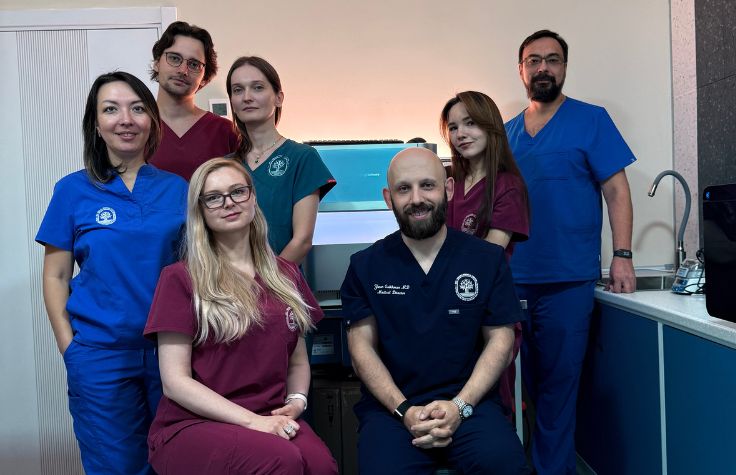
10 November 2015
On January 21, 2015, Illumina announced the launch of the MiSeq FGx System, the first fully validated next-generation sequencing (NGS) system for forensic genomics. Cydne Holt, Associate Director of Forensic Genomics for Illumina, brings us up to speed on progress to date.
What can you tell us about the adoption of the MiSeq FGx Forensic Genomics System since it launched in January 2015?
There have been some exciting developments to date. One or more MiSeq FGx instruments are installed in at least one operational crime lab in each region globally. Labs are preparing forensic samples with the ForenSeq DNA Signature Prep Kit and performing data analysis using the ForenSeq Universal Analysis Software, where forensic single nucleotide polymorphism (SNP) and short tandem repeat (STR) loci are simultaneously interrogated.
The California Department of Justice, for example, is performing internal validation studies of these products. Kings College London researchers also at the forefront, and through the establishment of a Knowledge Transfer Partnership, their work with the MiSeq FGx System is leading the way in the maturation of modern forensic identification methods.
There have also been multiple presentations at national and global symposia and webinars, as well as published papers where customer labs have shared data from their own internal evaluation and validation. For example, one study of the ForenSeq DNA Signature Prep Kit produced reliable, reproducible results, obtained full profiles with DNA input amounts of 1ng, and determined the kit is a valid tool for forensic DNA typing. Another study showed the MiSeq FGx System could provide more powerful analytical tools for the forensic genomics field.
Forensic Genomics is a very exciting field, and because of its popularity in movies and TV, there also seem to be some misperceptions about what is possible. Could you clarify some of those?
One topic that can be misunderstood is regarding DNA databases that house STR types from convicted offenders, arrestees, and / or suspects. One of these database structures is the Combined DNA Index System (CODIS) in the U.S., which some other countries use as well.
It could seem at first glance that in order for targeted NGS, such as with the Forenseq Signature DNA Prep Kit, to be used in criminal case work, the millions of previously collected DNA database samples would have to be retyped. That is inaccurate.
There are two main points that clarify this. First, DNA databases house STR genotypes (i.e., a string of numbers) from human individuals each with a finite lifespan. Improvements are made to DNA databases from time to time – for example, the current expansion of the capillary electrophoresis (CE)-based core loci (going from 12 to 20 core STR loci plus Amelogenin). Retyping will not be necessary. Information will be added prospectively, from a start date, so that going forward the power of the more complete genotype information is realized, as contemporary samples are populated.
A similar thought process comes with NGS, since it has been demonstrated that ForenSeq genotypes are concordant with the CE-based nomenclature of CODIS. MiSeq FGx allele nomenclature is backward compatible with CODIS. Going forward, database samples and crime samples typed with NGS will be added to databases prospectively.
One open question is when databases such as CODIS will add new markers – such as (1) shorter STRs that are more accessible in challenging evidence samples, (2) identity informative SNPs (iiSNPs) that have the highest likelihood of being typed within partially degraded casework samples, where conventional CE markers fail, and (3) STRs with maximum sequence variation, within repeat regions and in the flanking regions.
Today, criminalistics laboratories conduct direct comparisons (without CODIS) of evidence samples with suspected perpetrators that are developed from conventional police and judicial investigations. That lab work does not rely upon a database. That lab work is crucial as, unlike on TV, the majority of unknown samples do not produce a DNA database hit.
Use of short SNPs and STRs with the MiSeq FGx System allows more of those critical samples to be compared in open and active cases where a perpetrator is out of custody, and in cold cases, to help to positively impact public safety.
We know that evidence samples can be present in minute quantities. How did Illumina address this when designing the MiSeq FGx System?
The ForenSeq DNA Signature Prep Kit was designed and optimized for 1 nanogram of input human DNA, with robust performance at 50 picogram, and sometimes lower, depending on lab policies.
How cost-effective is targeted NGS with the MiSeqFGx System?
The ‘per sample price’ for targeted NGS is similar to current forensic, CE-based methods, and is less expensive when the amount of information that is generated in a single run is considered.
One ForenSeq amplification of >200 forensically relevant loci replaces at least six separate, iterative CE-based tests that an analyst would need to perform to generate a complete profile. The iterative and successive testing of CE is not only more expensive in dollars and hands-on time, but also in consuming precious samples. Additionally, many labs cannot accommodate multiple test systems such that incomplete profiles are a part of routine operations. Targeted NGS relieves some of that problem so that more cases are aided with probative genetic information in a single reaction.
Ninety-six single source samples can be run and analyzed simultaneously on the MiSeq FGx System. Depending on lab policy for detecting minor contributors in a DNA mixture, less evidence samples may be run to generate more information (i.e., deeper sequencing).
What about turnaround time for the MiSeqFGx System? How does that compare?
A single MiSeq FGx run is approximately 30 hours. While longer than CE, at the end of a single MiSeq FGx run, the result is a forensically-complete, dense contemporary dataset that extracts the most actionable genetic information in one shot – versus needing to run multiple, different CE tests (e.g., autosomal STRs and/or mini STRs, Y STRs, X STRs, and multiple iiSNP, aiSNP, piSNP multiplexes), consuming sample material and ending up with partial results.
Consolidating all loci into a single test can remove laboratory bottlenecks (or shift them) by freeing up time for analysts to perform other lab activities, such as screening evidence items for probative biological material, presumptive chemical testing of body fluids and stains, writing and reviewing case reports, and quality control monitoring.
At the end of one MiSeq FGx run, labs have the most forensically relevant genotypes possible today for known database and reference samples, and for unknown forensic evidence samples. This provides laboratories with the most powerful approach to DNA typing that has ever been available in forensic science, to address recidivist crime and increase public safety, as well as to exonerate the innocent from suspicion.


